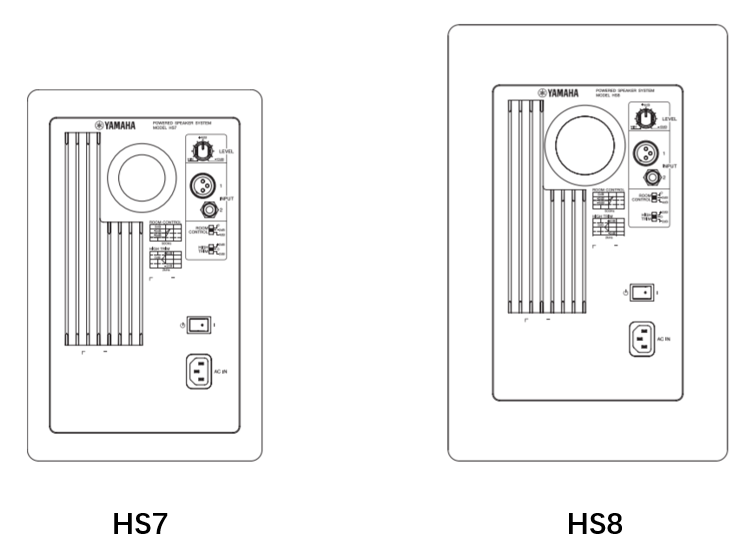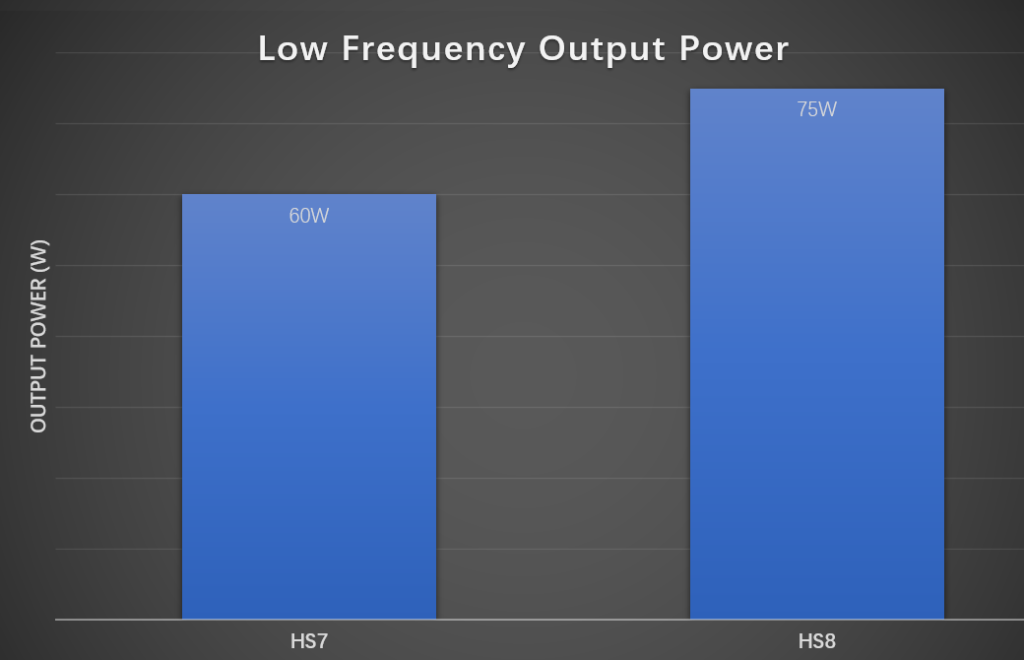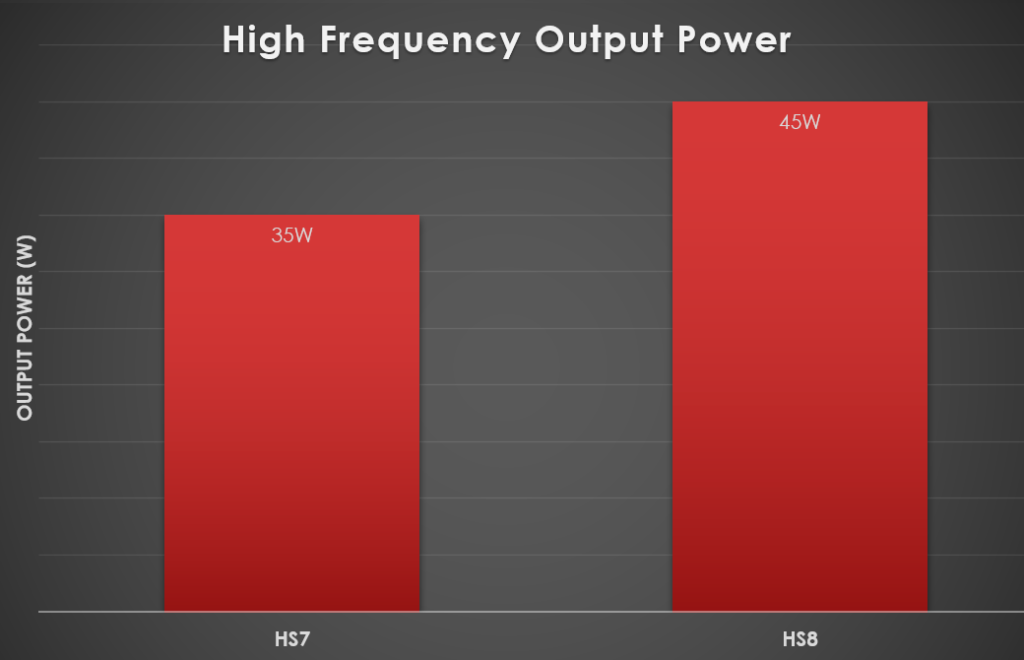Comparing the Yamaha HS7 vs HS8 Speaker
Yamaha HS7 vs HS8, which one is better? The Yahama brand has long been a high standard name when it comes to musical electronics. So it’s no surprise that the company would find itself in an odd situation. Yamaha literally has its own products in the same category are going head to head with each other as a consumer best choice. That’s the case with the Yamaha HS speaker/monitor series.
The two contenders sizing up for the detail and spec battle royale are the HS7 and the HS8 speaker models. At first glance, these studio monitors seem very similar. However, once a buyer digs into the details the differences start to appear on a regular basis. And a basic sound check isn’t going to be the prime differentiator. True to Yamaha’s reputation, the sound quality on both models is rated superior. Where the advantages start to play out tends to be in how the speakers are used. There are also differences when music styles change.
HS7
HS8
Yamaha HS7 vs HS8: Size
The size of HS8 is a bit of bigger

In terms of physical size, the HS8 takes a bit of a bigger footprint. Its height is 2.3 inches higher than the HS7, 1.5 inches wider, and 1.9 inches deeper. Bottom line, it’s a bigger box to keep in mind when using these monitors in a tight studio space. No surprise then, the HS8 weighs a bit more too, adding another 4.4 lbs per unit over the HS7. Again, if monitors are suspended, this difference could require a bit of a studio modification.
Yamaha HS7 vs HS8: Power Amp
The power amp of HS8 is a little bit stronger


The HS8 used a 1.5 inch bigger LF Driver than the HS7, and its power amp is somewhat stronger too at 75W versus 60W. Along the same lines, the HF Power Amp on the HS8 is also a bit stronger at 45W versus 30W on the prior model.
Yamaha HS7 vs HS8: Frequency Response
The frequency response of HS8 is sligtly wider and more stable

The frequency response on the HS8 provides a wider range from 38Hz-30kHz versus the HS7 at 43Hz-30kHz. What's more, the frequency response of HS8 is more stable than HS7, as we can see in the above graph.
Build and Tailoring
Both speakers come with high quality finish and body form. The ports are designed with maximum use and minimum sound interference, positioning everything in the back so nothing is interfering with placement or sound emission. The bodies are highly durable and can take handling without any dents or chips that commonly occur on lower quality equipment.
Placement Matters
Keep in mind the HS7 has a very solid, proven track record as a studio monitor. It comes with high accolades for its well-protected physical design. And the HS7 gets praise for the wide mix range of speaker sound too. No surprise, the HS7’s flexibility works well for personal studios, small operations, occasional music producers who rent space, and hobbyists. And, one of the advantages of the HS7 is that it can be set up in a number of different positions in relations to walls. The sound output remains rich regardless. This is not the case with the HS8. That model needs some distance from a wall surface in its proximity.
HS7
HS8
Performance Findings
When it comes to the sound performance, however, usage difference starts to come into play. First off, the HS8 has a far stronger bass output. This will make it really awkward to use in a small studio space. The HS8 bass will literally overpower all other sound levels. That makes monitoring challenging if not useless to the fine ear. In this respect the HS7 is the better choice. Its far more accommodating with less bass drive output in its design. This advantage starts to flip when the studio room gets bigger. Then the HS8 comes into its own, and the HS7 loses performance strength in the same.
The price point difference between the two models is only about $70 per unit, and folks are likely going to jump to the later model. Yet it could very well be a big performance mistake in a small studio setup.
Retaining the Midrange
The HS8 was intentionally designed to capture the electronic/disco/D&B genres with the heavy bass output. So if you’re a guitar virtuoso looking for the high notes that could be a problem. The HS8 is not going to tailor to upper range peaks as much. The midrange output on this speaker is, surprisingly solid. And there is no compensating loss due to the greater bass strength.
The Final Word
In a nutshell, the choice between the HS7 and HS8 is really dependent on where it's going to be used. Secondly, what kind of music genre a producer is working with comes into play too. For bands and producers with small studios and looking for a full, all-around range, you’re better served with the HS7. It's the Swiss army knife package to cover every need. If you’re working in a professional size, large studio and definitely focused on beats, electronic, disco, D&B and bass-dependent music genre, spend the extra $70 and invest in the HS8.
We also compared the Yamaha p115 vs p125 in the previous post, check it for more details.
HS7
HS8
10 Best Digital Piano Under $1000
Explore our curated list of the 10 best digital pianos under $1000. Find the perfect balance of quality and affordability for beginners and intermediate players alike.
The Top Digital Pianos Under $2000: A Guide to Superior Sound and Value
Discover the top 5 digital pianos under $2000. Our expert guide compares features, sound quality, and value to help you find the perfect instrument for your musical journey.
Best Casio Digital Piano and Keyboard
Explore the best Casio digital pianos and keyboards. Our comprehensive review covers a range of models, from beginner-friendly to professional-grade instruments.
10 Best Digital Piano Under $1000
Explore our curated list of the 10 best digital pianos under $1000. Find the perfect balance of quality and affordability for beginners and intermediate players alike.
The Top Digital Pianos Under $2000: A Guide to Superior Sound and Value
Discover the top 5 digital pianos under $2000. Our expert guide compares features, sound quality, and value to help you find the perfect instrument for your musical journey.
Best Casio Digital Piano and Keyboard
Explore the best Casio digital pianos and keyboards. Our comprehensive review covers a range of models, from beginner-friendly to professional-grade instruments.
Best Digital Piano for Advanced Pianist
Discover the finest digital pianos for advanced pianists. Our expert guide explores high-end models with authentic touch, rich sound, and professional features to elevate your performance.
Best Digital Piano Under $500
Uncover the best digital pianos under $500. Our comprehensive guide helps you find budget-friendly options without compromising on sound quality and essential features.